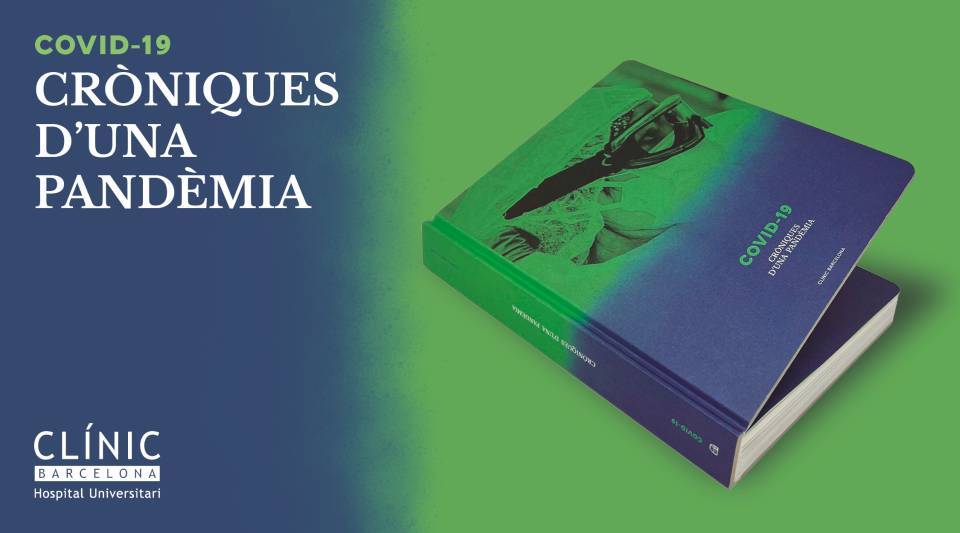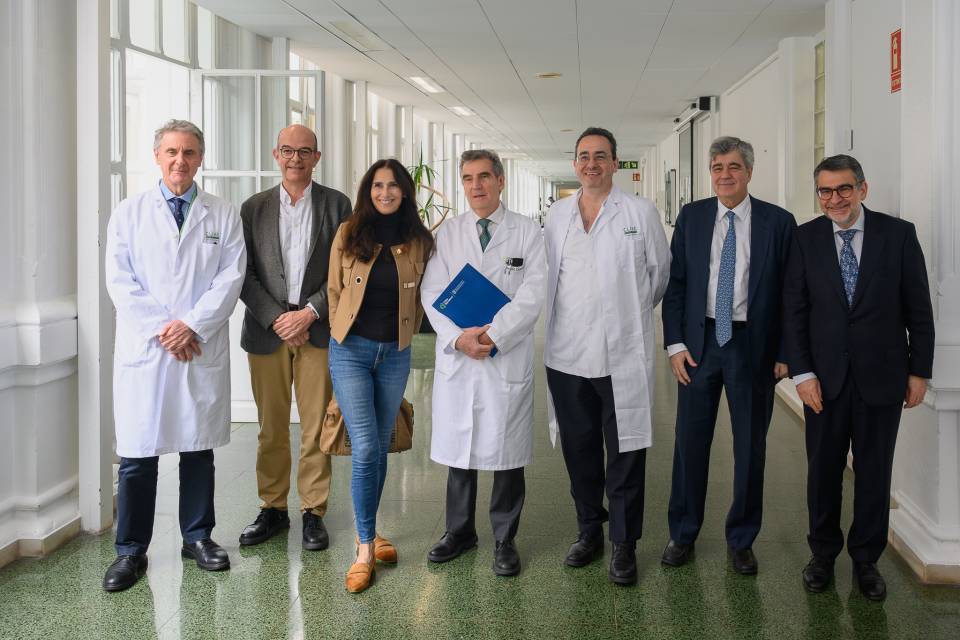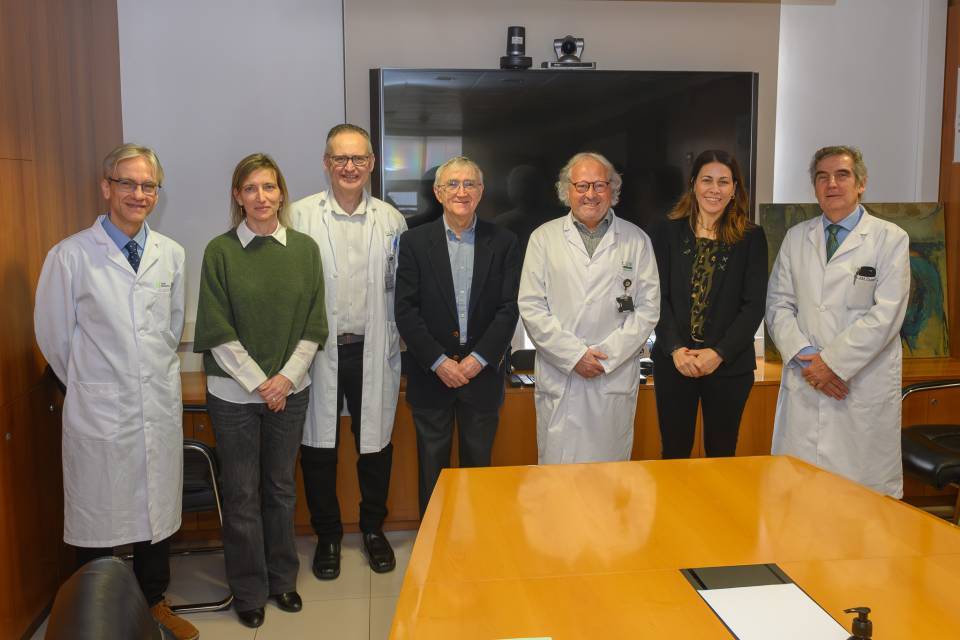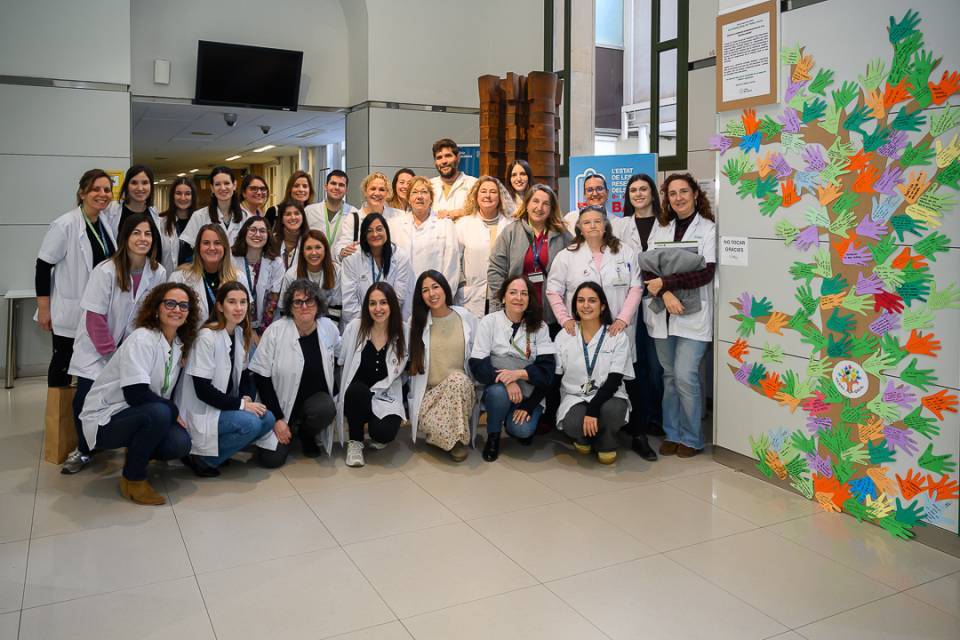At the same time, ‘COVID-19. Chronicles of a Pandemic' is also a gesture of gratitude to all those individuals and institutions that helped the hospital overcome the most difficult moments, with financial and material donations, with their time and their emotional support. ‘COVID-19. Chronicles of a Pandemic’ also pays tribute to those who died of COVID-19.
You can buy the book ‘COVID-19. Chronicles of a pandemic '
This Tuesday, the book was presented at an event held at the Hotel Catalonia Plaza, in Plaça d'Espanya in Barcelona, in the presence of the authors of the chapters and professionals from the Hospital Clínic. During the first wave, the Hotel Catalonia Plaza was turned into a ‘medicalized hotel’ to care for patients with COVID-19. The book will be available in bookshops from 13 July and can also be purchased online from the Hospital Clínic’s website.
The journalists who wrote the various chapters of the book are: Màrius Carol, Emilio Pérez de Rozas, Jessica Mouzo, Ana Macpherson, Antoni Bassas, Llucia Ramis, Marta Arrufat, Mònica Bertran, Víctor-M. Amela, Neus Tomàs, Roger Escapa, Josep Mª Martí. The book contains the accounts by over 50 professionals from different disciplines who worked at the Hospital Clínic during the most complex months of the COVID-19 pandemic.
These are the chapters that make up the book, ‘COVID-19. Chronicles of a Pandemic’. You can also find a short extract from each chapter:
- Introduction. A pandemic of values and emotions (written by Màrius Carol)
- February 25th, 2020. The day COVID-19 entered the Clínic. – (written by Emilio Pérez de Rozas): “After his suggestion, they started testing everyone. The same doctor who proposed that possibility chose four local patients with pneumonia, performed a PCR test on them, and all four tested positive for COVID-19. “And then all hell broke loose”, admits Bragulat, “because not only did we realise that we had a new source of infection, but we also realised that all the healthcare workers, doctors, nurses and other staff who had been in contact with these pneumonia patients could be unknowingly infected with COVID-19. And, indeed, many of them, almost all of them, had to go home because they were close contacts”.
- Uncertainty (written by Jessica Mouzo): “A second patient arrived a few hours after the first. And then a third. The Infectious Diseases room was filled within a few days. The AVI and other intensive care units filled as well. The hospital was turned upside down to accommodate all the patients who entered through the doors and doubts began to crowd themselves in between patients and the healthcare workers. The reality of the situation went beyond evidence and experience. The majority of healthcare workers didn't even know how to put on PPE. Robau was like the ward’s “police officer”, she now jokes”.
- Fear (written by Ana Macpherson): “We had 50 beds for critical patients throughout the hospital, and we ended up with 140. We invented beds. Each new ICU we opened would last one night; they filled up within 24 hours. When we were intubating non-stop, we really thought we would collapse, that we would have to reject patients because we couldn’t care for them. We got to that point, but it didn’t happen”, explains Joan Ramon Badia, director of the Clínic’s Respiratory Institute”.
- Distress (written by Marta Arrufat and Mònica Bertran): “Although death is an unavoidable part of life, most healthcare professionals begin their careers thinking about how to avoid it and trying to prolong life maintaining the highest possible quality. Only when they have exhausted all therapeutic options, and it is a minority that focuses on this, do they accompany us towards the end of life. However, in the first wave they were unable to save or care for or accompany all the sick as they might have wanted”.
- Transformation (written by Llucia Ramis): “An older married couple were hospitalised for a month in the same room. The wife was taken to the ICU, and she never returned. Her sons decided that they wouldn’t tell their father that she'd died. He asked for her every time someone entered the room, as well as in the video calls. Where is she? How is she? When will she come back? He continued until they discharged him. Changes came suddenly. A patient who was well one day could die the next”.
- Commitment (written by Antoni Bassas): “ICUs were turned upside down as they filled up with patients. Seeing them like this made a big impression on Carmen. What left even more of a mark was having to tear messages down from the windows of rooms; relatives would send messages in by telephone, and the nursing staff would write them down on sheets of paper so that patients could read them. These were messages patients would see which would silently keep them company. Messages such as “you are not alone”, “we’re thinking of you”, or “you’re going to pull through”. But often the patients did not pull through”.
- Generosity (written by Víctor M. Amela):
- We didn’t sleep at night thinking we might miss opportunities to buy respirators, masks, gowns, goggles…
- The Chinese! (It’s where the virus came from and also where we got the material to combat it. China!
- China is the world’s factory”, confirms Rosa García, and she adds:
- I used my cell phone at odd hours to call a trusted Catalan businessman in China, one of our contacts there who selflessly helped us, and asked him to go to the airport to see if they loaded the purchased material onto the plane: “Have you seen the box of respirators loaded onto the plane?”, I asked anxiously… “Yes, I’m looking at it right now!” “Good!” I replied, I needed to know it was really taking off and heading to Barcelona...”
- Weariness (written by Neus Tomàs): “Phones were their only contact at the beginning and, in many cases, at the end. Karina is moved when she remembers that, in the two weeks she was hospitalised, she shared a room with six patients and two of them died. One was a woman who borrowed her phone to say goodbye to her son. The day she died, she realised it was coming because she suddenly stopped complaining. Karina was very ill, and it was difficult for her to share how her roommate had died”.
- Hope (written by Roger Escapa): “During the spring of 2020, Àlex Soriano was cycling home. The streets of Barcelona had a tranquillity that now, two years later, has been consumed by cars once more. After a whole day inside the hospital as Head of the Infectious Diseases Service, he felt like a cyclist reaching the end of the race. In competitions, if the last metres are those filled with spectators cheering on athletes, that last stretch home was filled with applause of gratitude towards healthcare workers. “We felt we had the public on our side”, he recalls”.
- Epilogue: Two years of pandemic (written by Josep M. Martí):
The book includes videos and photographs from the different waves of COVID-19 at the Hospital Clínic, and a chronology of the events that took place at the hospital, in Catalonia in general and around the world, which serve to recall some of the most intense, uncertain and emotional moments since 25 February 2020, the day the first case of COVID-19 in Catalonia was diagnosed at the Hospital Clínic.
The companies Colonial, Hotel Investment Partners, Ferrer, Farmhispania Group and Catalonia Hotels & Resorts supported this project and financed the publication of the book.





